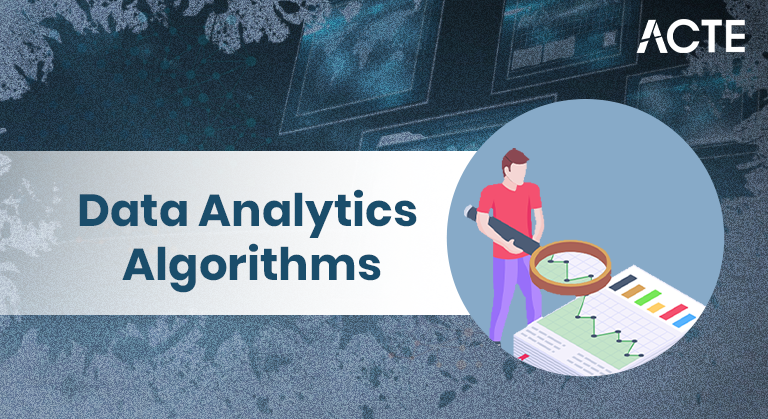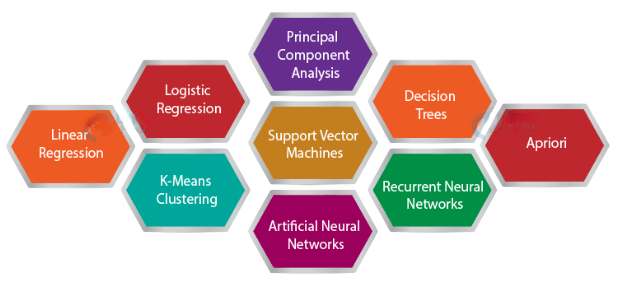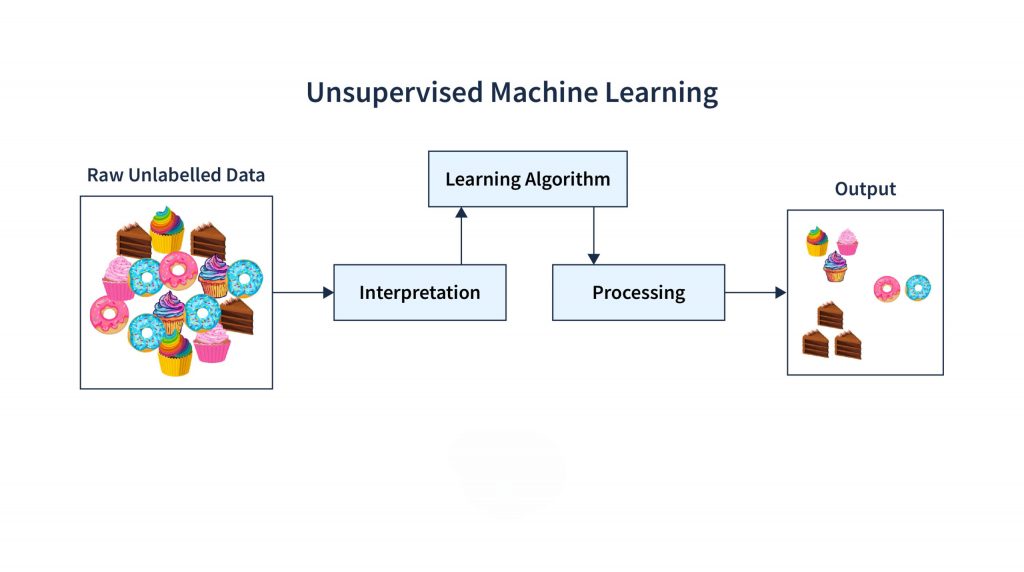
- Introduction
- What Are Algorithms in Data Analytics?
- Why Algorithms Are Critical in Data Analytics
- Types of Algorithms Used in Data Analytics
- Supervised Learning Algorithms
- Unsupervised Learning Algorithms
- Optimization Algorithms
- Real-World Applications of Algorithms in Analytics
- Conclusion
Introduction
In the age of data, organizations rely heavily on analytics to make informed decisions. Whether it’s predicting consumer behavior, optimizing supply chains, or identifying fraud, the engine behind all of this intelligence is the algorithm. Often unseen but constantly at work, algorithms form the core foundation or the backbone of modern data analytics. This blog explores their role, types, applications, and how they are shaping the data-driven world Data Analytics Training. In today’s data-driven world, Big Data Engineers serve as the backbone of data analytics, transforming vast amounts of raw data into actionable insights. By designing and managing scalable data systems, they enable organizations to make informed decisions that drive innovation and growth. This role demands a blend of technical expertise, problem-solving skills, and a deep understanding of data frameworks like Hadoop and Spark. Through hands-on experience and continuous learning, Big Data Engineers unlock the full potential of data, powering analytics that shape the future of industries across the globe.
What Are Algorithms in Data Analytics?
An algorithm is a step-by-step computational procedure used to solve a problem or accomplish a task. In the context of data analytics, algorithms are designed to analyze patterns, extract insights, or make predictions from data. These algorithms can be as simple as sorting data or as complex as neural networks powering AI models Apache Spark Certification. The goal is to automate the analysis process and allow machines to learn from data leading to faster, more accurate, and scalable decision-making systems. Algorithms in data analytics are step-by-step computational procedures designed to process data and extract meaningful patterns or insights.

They serve as the foundation for analyzing large datasets, enabling tasks such as classification, clustering, regression, and anomaly detection. By applying mathematical and statistical techniques BFSI Sector Big Data Insights , Types of Algorithms help transform raw data into actionable information. In big data environments, efficient algorithms optimize processing speed and accuracy, making it possible to handle complex data structures. Ultimately, these algorithms empower businesses to make data-driven decisions, predict trends, and solve problems effectively.
Interested in Obtaining Your Data Analyst Certificate? View The Data Analytics Online Training Offered By ACTE Right Now!
Why Algorithms Are Critical in Data Analytics
- Efficient Data Processing: Algorithms enable quick and effective handling of large and complex datasets.
- Pattern Recognition: They help identify meaningful patterns, trends, and relationships within data.
- Automation: Algorithms automate repetitive analysis tasks, saving time and reducing errors.
- Predictive Insights: Become a Big Data Analyst They power predictive models that forecast future trends and behaviors.
- Decision Support: Algorithms provide actionable insights that support informed business decisions.
- Scalability: Well-designed algorithms scale to accommodate growing volumes of data.
- Improved Accuracy: They enhance the precision of data analysis by minimizing human bias.
To Explore Data Analyst in Depth, Check Out Our Comprehensive Data Analytics Online Training To Gain Insights From Our Experts!
Types of Algorithms Used in Data Analytics
- Classification Algorithms: Assign data into predefined categories (e.g., Decision Trees, Logistic Regression, Support Vector Machines).
- Regression Algorithms: Predict continuous numerical outcomes (e.g., Linear Regression, Ridge Regression).
- Clustering Algorithms: Group similar data points without predefined labels (e.g., K-Means, Hierarchical Clustering).
- Association Rule Learning: Discover relationships and patterns in large datasets (e.g., Apriori, Eclat) Big Data Can Help You Do Wonders.
- Anomaly Detection Algorithms: Identify unusual data points or outliers (e.g., Isolation Forest, Local Outlier Factor).
- Recommendation Algorithms: Suggest items based on user behavior and preferences (e.g., Collaborative Filtering, Matrix Factorization).
- Dimensionality Reduction Algorithms: Reduce the number of variables while preserving important information (e.g., PCA, t-SNE).
Supervised Learning Algorithms
Supervised learning algorithms are a core part of machine learning where models are trained using labeled data meaning the input data is paired with the correct output. The goal is for the algorithm to learn the relationship between inputs and outputs so it can predict results for new, unseen data. These algorithms are commonly used for classification and regression tasks. Popular supervised learning algorithms Data Analytics Training include Linear Regression, which predicts continuous values, and Logistic Regression, used for binary classification problems. Decision Trees break down data into branches to make predictions, while Support Vector Machines (SVM) find the best boundary separating different classes. Random Forests combine multiple decision trees to enhance accuracy and reduce overfitting. Another example is Naive Bayes, which applies probability theory for classification. Supervised learning is widely applied in industries for tasks like email spam filtering, credit scoring, and medical diagnosis, making it essential for predictive analytics.
Gain Your Master’s Certification in Data Analyst Training by Enrolling in Our Data Analyst Master Program Training Course Now!
Unsupervised Learning Algorithms
Unsupervised learning algorithms work on unlabeled data. Their goal is to identify hidden patterns, relationships, or groupings without prior knowledge of the outcome. Unsupervised learning algorithms analyze and interpret data without labeled responses. Unlike supervised learning, these algorithms work with input data that has no predefined output or categories. Their primary goal is to find hidden patterns, Essential Concepts of Big Data & Hadoop , groupings, or structures within the data. Common unsupervised learning techniques include Clustering, where algorithms like K-Means and Hierarchical Clustering group similar data points together based on their features. Another important technique is Dimensionality Reduction, using methods such as Principal Component Analysis (PCA) and t-SNE to reduce the number of variables while preserving the essential data characteristics.

Unsupervised learning is useful for exploratory data analysis, customer segmentation, anomaly detection, and market basket analysis. It helps businesses discover natural groupings in data, identify outliers, Linear Regression and uncover insights that aren’t immediately obvious, making it a powerful tool for deriving value from unlabeled datasets.
Are You Preparing for Data Analyst Jobs? Check Out ACTE’s Data Analyst Interview Questions and Answers to Boost Your Preparation!
Optimization Algorithms
- Purpose: Optimization algorithms aim to find the best solution (maximum or minimum) from a set of possible options.
- Role in Data Analytics: They improve model performance by minimizing error or maximizing accuracy.
- Common Types: Gradient Descent, Genetic Algorithms, Simulated Annealing, and Particle Swarm Optimization.
- Gradient Descent: Big Data is Transforming Retail Industry Widely used to optimize machine learning models by iteratively adjusting parameters to reduce loss.
- Genetic Algorithms: Inspired by natural selection, these use evolution-based techniques for complex optimization problems.
- Simulated Annealing: Mimics the cooling of metals to escape local minima and find global optima.
- Applications: Used in parameter tuning, feature selection, resource allocation, and scheduling problems.
- Importance: Optimization algorithms are critical for efficient, accurate, and scalable data analytics solutions.
Real-World Applications of Algorithms in Analytics
Algorithms aren’t just theoretical they power real-world solutions across industries:
- Healthcare: Predictive algorithms identify at-risk patients and suggest treatments.
- Finance: Kafka vs RabbitMQ Fraud detection and risk modeling are driven by machine learning models.
- Retail: Recommender systems suggest products using collaborative filtering.
- Transportation: Algorithms optimize routes and fleet utilization in logistics.
- Marketing: Algorithms personalize campaigns and calculate ROI in real time.
The growing integration of algorithms into everyday business operations shows how fundamental they’ve become.
Conclusion
Algorithms are the invisible architects of today’s data-driven decisions. From basic descriptive statistics to sophisticated neural networks, they shape how we understand, interpret, and act on data. Understanding algorithms isn’t just for data scientists; anyone involved in business strategy, operations, or technology can benefit from knowing how data is transformed into insights. As we move toward a future defined by automation, personalization, and real-time intelligence, Types of Algorithms will continue to serve as the backbone of data analytics powering the systems, Data Analytics Training platforms, and innovations of tomorrow. Algorithms are the driving force behind effective data analytics, enabling the transformation of raw data into valuable insights. Whether through supervised, unsupervised, or optimization techniques, algorithms help uncover patterns, make predictions, and solve complex problems efficiently. Their role is essential in powering data-driven decisions across industries, improving accuracy, scalability, and automation. As data continues to grow in volume and complexity, the importance of robust, well-designed algorithms will only increase, making them indispensable tools for businesses and data professionals alike.


